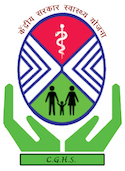Infertility is trying to get pregnant through frequent intercourse for a year or more without any success. In addition, if females suffers from miscarriages it is infertility. In this article, we will discuss female infertility in detail and Ayurveda treatment for the same.
Facts on Female Infertility
- About 10 to 12% of couples worldwide have trouble getting pregnant or failure in successful delivery.
- Infertility is not always a female problem. About one-third of the time, infertility is due to female factors. The male factors resulting in infertility about one-third of the time. In remaining of the cases, either there is a combination of both female and male factors, or the cause remains unknown.
- In about twenty-five percent of infertile couples, more than one factor contributes to infertility.
- About one-third couples with the female over 35 years of age have fertility issues.
- The cause of female infertility may be difficult to diagnose.
- The treatment depends on the cause. In about 95% of cases after treatment, the couple successfully conceives after trying for two years.
- Female fertility is mostly determined by the genetics that influences the number of eggs the female is born with. This means that the number of eggs during the time of birth in female determine the length of the time she will remain fertile
- Most of the women by the age of 44 are infertile even if they are ovulating regularly. In other words, the rate of conception becomes very low after 43 in the female.
Symptoms of Female Infertility
In most of the cases of female infertility, there is no outward signs and symptoms.
The main symptom of female infertility is, no doubt, the inability to get pregnant even after trying for a year or at least six months in females above 35 years of age. In females with infertility, menstrual cycle may be too short, less than 21 days, or too long for more than 35 days. If menstruation is absent or irregular, it means that the female is not ovulating.
As mentioned above, infertile females may also suffer from subsequent miscarriages.
Causes of Female Infertility
Female infertility may result from a physical problem, hormonal problem, lifestyle disorders, environmental factors, and age. Let us discuss the causes of female infertility in detail.
Ovulation Disorders
It is the cause of infertility in every 1 in 4 couples.
Ovulation disorder means that the female is not ovulating at all or ovulate infrequently. Ovulation disorder is a result of problems with the regulation of the reproductive hormones by the pituitary gland or hypothalamus or due to the problems in ovaries.
Polycystic ovarian syndrome – Polycystic ovarian syndrome leads to hormonal imbalance that affects ovulation. It is associated with obesity, abnormal hair growth on body or face, insulin resistance, and acne. Today it is one of the most common causes of female infertility.
Premature Ovarian Failure – It is an autoimmune response or premature loss of the eggs from the ovary due to genetic or chemotherapy. It is also called primary ovarian insufficiency. In this disorder, the ovaries no longer produce eggs. In addition, the production of oestrogen in females under the age of 40 lowers.
Hypothalamic dysfunction – Follicle-stimulating hormone and luteinizing hormones are two hormones produced by the pituitary gland and are responsible for the stimulation of ovulation every month in the female. Due to Excess emotional and physical stress, very low or high body weight, recent substantial weight loss, or weight gain, the production of these hormones is disrupted. As ovulation is affected, it results in irregular or absent periods.
Too much prolactin – If the pituitary gland produces excess prolactin, it reduces oestrogen production and results in infertility.
Tubal Infertility or Damage to Fallopian Tubes
Blocked damaged fallopian tubes keep the sperm from reaching the egg. It may also block the passage that leads the fertilized egg into the uterus.
Causes of tubal infertility include:
Pelvic inflammatory disease or PID – PID is an infection of fallopian tubes and uterus due to sexually transmitted infections such as chlamydia or gonorrhoea.
Pelvic tuberculosis – It is one of the major causes of tubal infertility
Previous surgery of pelvis or abdomen. It also includes surgery for ectopic pregnancy.
Endometriosis
Endometriosis happens when the tissue that usually grows in the uterus starts growing in other nearby locations. The extra tissue growth and then the surgical removal of the tissue results in a scar that contributes to the blockage of the fallopian tube. Endometriosis affects the uterus lining and disrupts the implantation of the fertilized egg.
Cervical or Uterine Causes
- Cervical or uterine causes that lead to miscarriage and impact fertility are:
- Uterine polyps or tumours
- Inflammation within the uterus
- Uterine abnormality since birth such as the abnormally shaped uterus
- Cervical stenosis is the narrowing of the cervix. It may be due to the damage to the cervix or may be present as inherited malformation.
- In a few cases, the cervix does not produce the type of mucus, which is required for the sperm to travel into the uterus to the cervix.
Unexplained Fertility
Female infertility may be due to an unknown cause or combination of several minor issues present in both the partners.
Risk Factors for Female Infertility
Age – With age, the quantity and the quality of women egg declines. In the mid-’30s, there is a loss of speed of the rate of follicles that leads to poor quality and fewer eggs.
Weight – Significant underweight or being overweight affects normal evolution.
Alcohol– Excessive alcohol consumption reduces the chances of conception.
Smoking – Smoking damages the fallopian tube and cervix. It increases the chances of ectopic pregnancy and miscarriage. Smoking ages the ovaries are depleted the number of eggs prematurely.
Sexual History – Sexually transmitted diseases such as gonorrhoea and chlamydia, damages the fallopian tube. Unprotected sex and sex with multiple partners increase the chances of STD that causes infertility.
How Female Infertility occurs
Pregnancy is the result of the following process:
- To get pregnant, a mature egg is released from one of the ovaries during the time of ovulation.
- The fallopian tube should be opened as the fallopian tube picks up the egg
- Regular intercourse during fertility time.
- A man sperm should be able to join the egg along the way for fertilization. The sperm swims up to the cervix, through the uterus reaches the fallopian tube for fertilization.
- The fertilized egg travels down the fallopian tube to the uterus and attaches to the inside of the uterus, and the process is implantation.
- After implantation, the fertilized egg grows in the uterus.
If there is a problem in any of the above-mentioned steps, it results in infertility.













